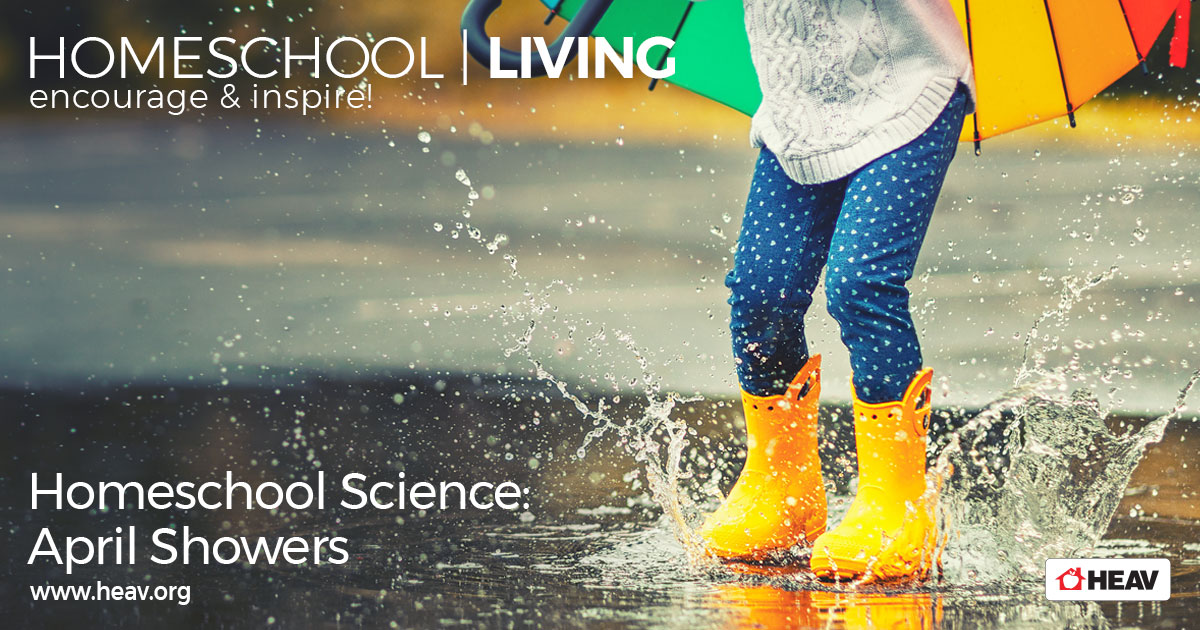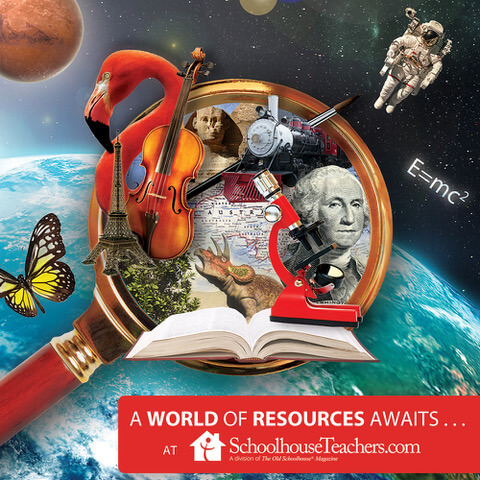Homeschool Science: April Showers
If you’ve ever heard someone say, “April showers bring May flowers,” you’ve brushed up against a bit of weather wisdom that has stood the test of time. But is there any science behind the saying—or is it just poetic folklore? And how can you turn this into a fun, hands-on homeschool science lesson? In this Homeschool Living, dive into the meaning of this springtime proverb, the science of spring weather, and an easy DIY rain gauge you can build right in your backyard. This is a perfect unit to blend science with nature study, math, and even a little language arts.
April Showers Bring May Flowers
The phrase “April showers bring May flowers” has been floating around in English-speaking countries for centuries, with roots tracing back to a 1557 poem by Thomas Tusser. This saying is often understood to have two meanings, with “April showers” symbolizing discomfort, change, and adversity while “May flowers” may symbolize hope, growth, and new beginnings. This proverb encourages resilience, patience, and optimism, reminding us that difficult situations are temporary and will eventually lead to better times. Encourage your kids to research other weather sayings—like “Red sky at night, sailor’s delight”—and dig into whether there’s truth behind them.
The saying isn’t just poetic; there’s a bit of meteorological truth to it, too. Wonderopolis explores this idea literally by connecting it to plant biology—April showers soften the ground and provide the hydration plants need after winter’s rest. In many temperate regions, including much of the U.S., spring is when warmer air starts colliding with lingering winter cold. This clash can stir up quite a bit of wet and wild weather.
If it feels like spring can’t decide what kind of weather it wants to deliver, you’re not wrong. One day might bring sunshine and 70 degrees, while the next has you reaching for your winter coat again. Check out these five reasons spring is the most volatile season.
Virginia Rain Showers Variability
Virginia, in particular, is a great example of this unpredictability. As Cheryl E. Preston notes in a recent article, April in the Commonwealth often proves the older generations right: expect everything, and be surprised by nothing. This unpredictability makes spring a perfect season to observe nature’s patterns—and unpredictability—through homeschool science activities.
Making a Rain Gauge for April Showers
One of the best ways to bring this weather talk to life in your homeschool is to build a rain gauge. It’s a simple project that lets kids measure rainfall, record data, and connect what they see outside to real science skills like observation, measurement, and charting.
To make your own, you’ll need an empty plastic bottle, scissors, a ruler, a permanent marker, and some rocks. Follow the step-by-step guides from WikiHow or check out a more durable, glass version with The Homeschool Scientist. Once your gauge is set up, check it daily or after each burst of April showers, and track your findings in a weather journal. You might even compare your data with local weather reports!
April Showers Blessings
Spring may keep us guessing, but it’s also a wonderful time to learn. Whether you’re watching clouds roll in or measuring rainfall with your homemade gauge, there’s no shortage of opportunities for meaningful homeschool science. So next time the skies darken, grab your rain boots and your science journal—and let April showers spark a whole new kind of learning.
For more weather tracking ideas and learning opportunities, check out this Homeschool Living.
Megan Mora Fuentes
Enjoy this article?
For more insightful and encouraging homeschool related articles, homeschool living tips, and homeschool connections, visit our HEAV blog.









